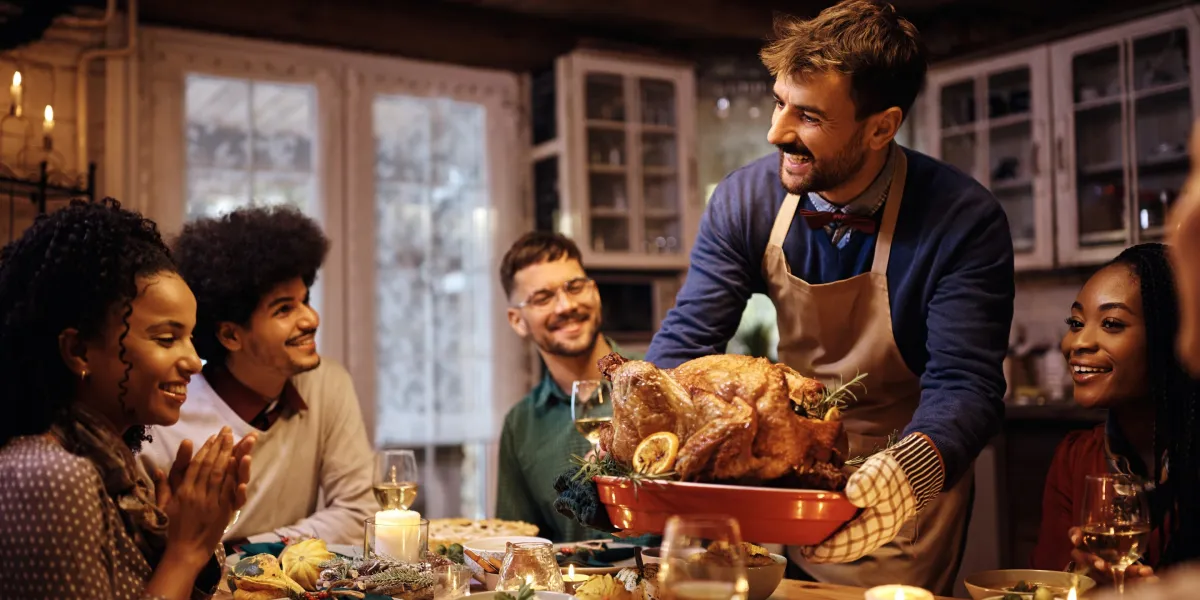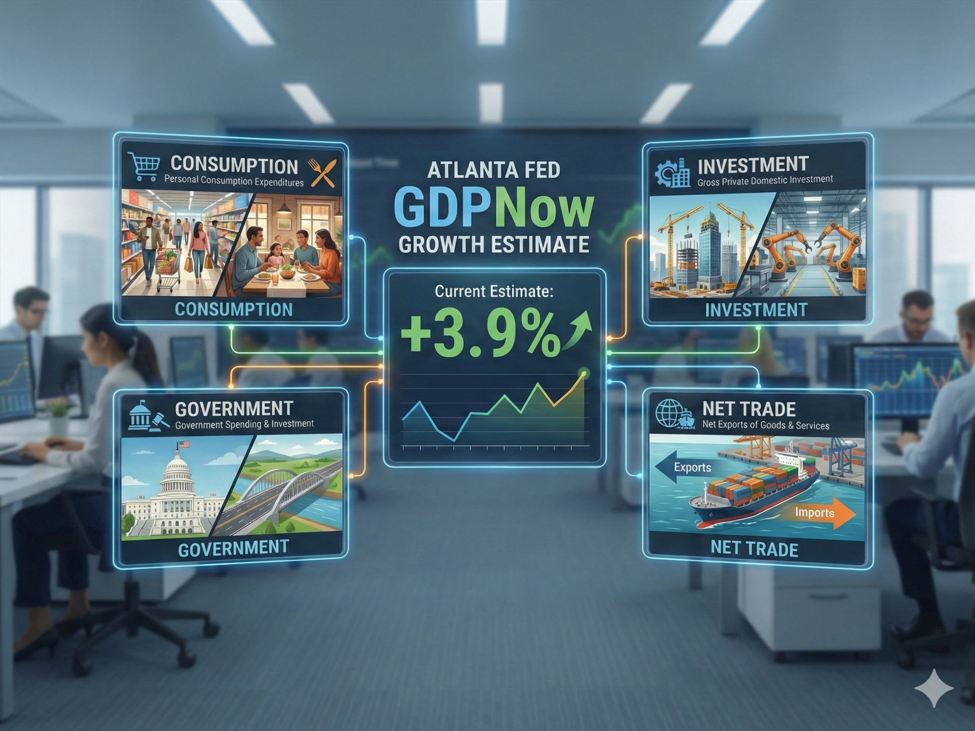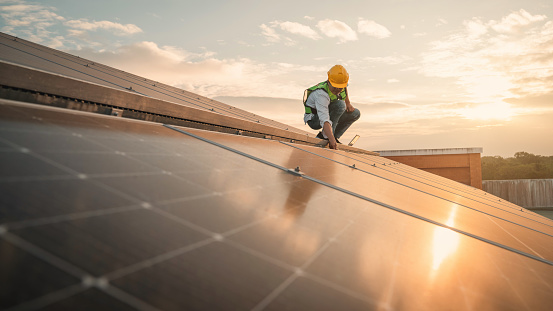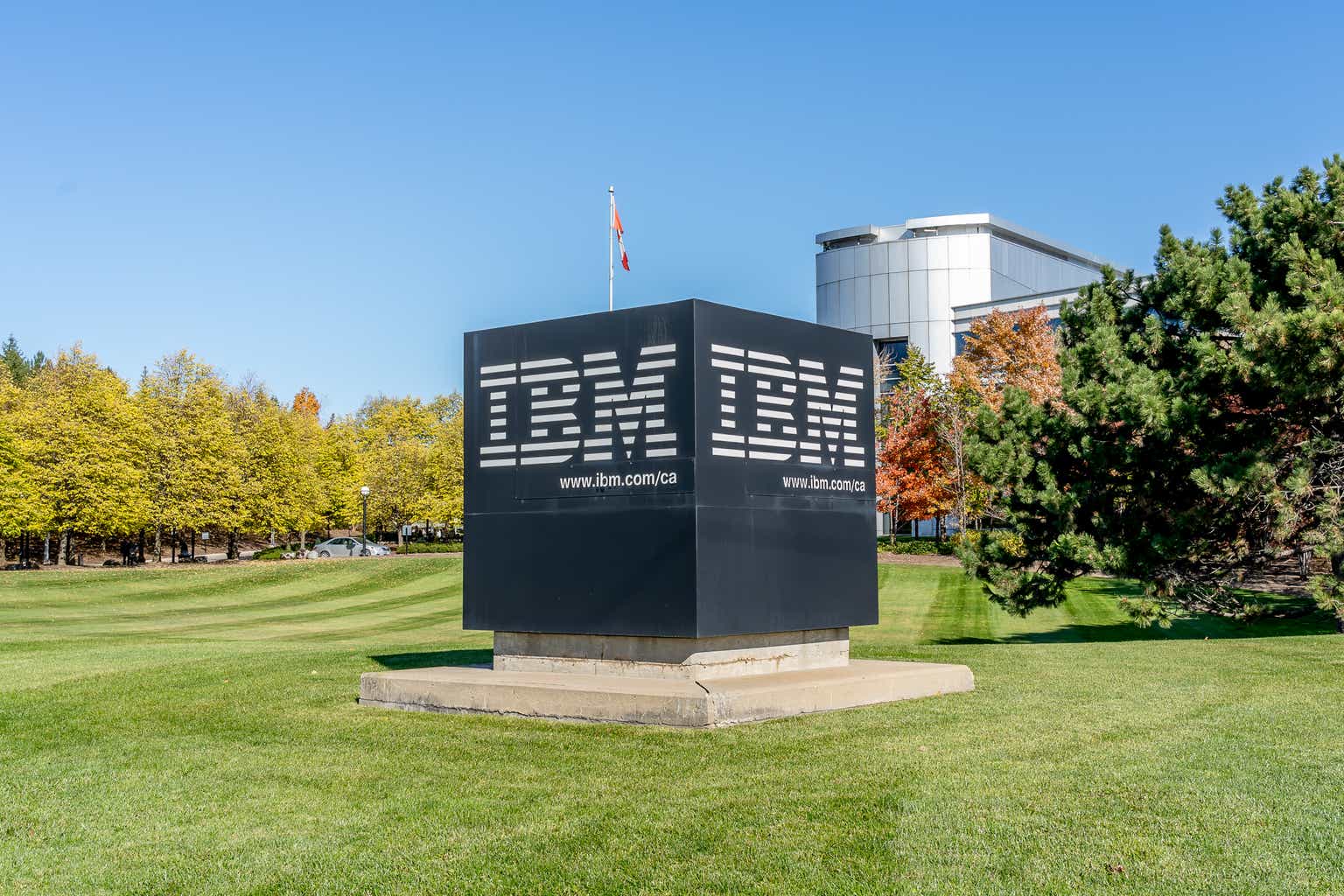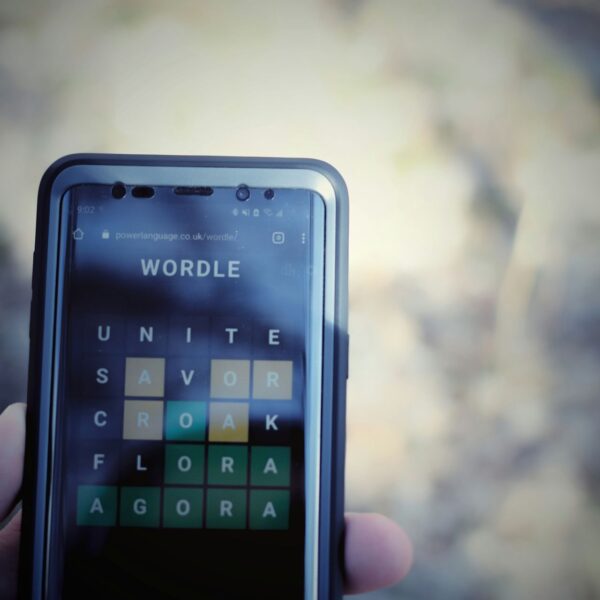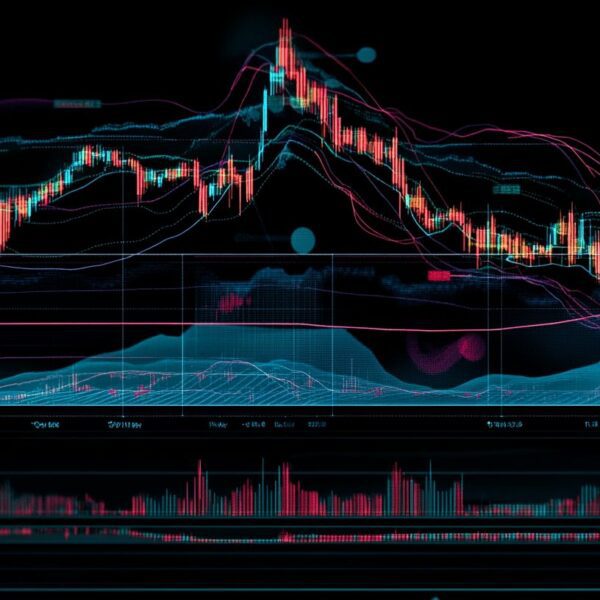
Eb Gargano has been writing recipes online long enough to anticipate the seasonal rhythms of her web traffic. The Easy Peasy Foodie creator can predict when US readers begin searching for her stress-free turkey instructions, or when her Christmas cake will start its annual climb up Google search results.
This year, those familiar patterns are breaking. Instead of sending home cooks to her decade-old, well-tested recipes, Google increasingly inserts AI-generated summaries stitched together from bits of her work and others’ that often get the basics wrong. An AI-assembled version of Gargano’s Christmas cake, for instance, would have people cooking a 6-inch cake for 3 to 4 hours at 320°F (160°C).
“You’d end up with charcoal!” she said. Meanwhile, traffic to her turkey recipe is already down 40% year over year.
Recipe bloggers like Gargano said it’s the first holiday season where consumers are starting to trust AI answers in search and chatbots, as well as recipe content remixed by AI, which can be hard to distinguish from the real thing. That’s not just bad for business; it’s potentially ruinous for a holiday dinner table if home cooks, inspired by pretty AI-generated photos, try recipes that turn out unappetizing or that defy the laws of chemistry. In interviews, 22 independent food creators said that AI-generated “recipe slop” is distorting nearly every way people find cooking advice online, damaging their businesses while causing consumers to waste time and money.
Across the internet, writers say their vetted recipes are hidden by the flood. Pinterest feeds are stuffed with AI-generated images of food that the attached instructions won’t achieve; Google’s AI Overviews surface error-filled cooking steps that siphon away clicks from professionals. Meanwhile, Facebook content farms use AI-generated images of supposedly delicious but impossible dishes to the top of people’s feeds, in an attempt to turn any clicks into ad revenue.
All of this, food bloggers say, erodes the simple promise of a recipe: that someone has actually cooked it before you have. To Gargano, this is the core issue. “No matter how clever the AI is,” she said in a recent interview, “it can never actually test a recipe in a real kitchen and see how it works.”
Food blog traffic can vary wildly by niche, platform, audience and even season. But AI slop is everywhere. Yvette Marquez-Sharpnack, the 15-year author of the Mexican food blog Muy Bueno, recently warned her more than 190,000 Facebook followers. Earlier this month, she posted two AI-generated tamale photos: one with sauce poured over the husks, and another showing tamales lying flat in a steamer. Both, she wrote, were obvious mistakes.
The husks aren’t meant to be eaten; you remove them before adding sauce. And tamales should steam upright so the masa cooks evenly. “Little details like this are big red flags,” she told readers. “When you search for recipes, make sure they come from trusted human cooks who actually test their food.”
The issue hit home last Christmas when her husband wanted to try a recipe on Facebook for maraschino cherry chocolate chip cookies — from a post that didn’t seem to have a human author or source. Marquez-Sharpnack said she was suspicious of the photos, in which the cookies were a little too perfectly pink. But her husband trusted the post because “it was on Facebook.” The result was a melted sheet of dough with a cloyingly sweet flavor. “A disaster,” she said.
Meanwhile, Marquez-Sharpnack has seen her own photos reused without permission on Facebook, Pinterest, and even Etsy, where one seller included her recipes in a digital cookbook. With most of her traffic still coming from Google, she now urges readers to verify what they click: check URLs, look for real “about” pages, and be wary of impossible or overly glossy images.
Etsy Inc. and Facebook owner Meta Platforms Inc. didn’t respond to requests for comment. Pinterest Inc. said creators’ traffic can fluctuate for many reasons and emphasized that its generative-AI tools are meant to supplement, not replace, human creativity.
In a statement, Google said that “AI Overviews are often a helpful starting point to learn about a dish, but we see that people still want to go and read original recipes from creators. We’re focused on making it easy for people to discover and visit useful sites that have a good user experience.”
For Carrie Forrest, who runs Clean Eating Kitchen, AI has been devastating: 80% of her traffic — and her revenue — has disappeared in two years. Although the views started dropping when OpenAI’s ChatGPT was released, it wasn’t until Google launched AI Mode in search that her traffic collapsed, she said. Since then, she’s gone from employing about ten people to letting everyone go. “I’m going to have to find something else to do.”
This holiday season is on track to be Forrest’s slowest in years. She fears that if more content creators give up, the AI won’t have new content to draw from, except content generated by AI. It may get to a point where “AI is just talking to itself,” and home cooks are gambling with the results, she said.
Internet users may be drawn to easy, quick AI answers as an alternative to web pages in part because food bloggers often include personal essays — sometimes running to many paragraphs — on their pages, meaning readers must scroll before reaching a recipe at the bottom. That’s a phenomenon that also came about because of Google: longer content historically allowed higher ranking in search results and more space for ads.
The food bloggers said Google still delivers the bulk of their traffic, but the once-steady source now comes with unpredictable fluctuations they struggle to understand or plan around. They’re also affecting how food knowledge moves around the internet at a basic level.
When searching on Google for Chinese cooking traditions, a casual cook may be satisfied by the AI Overview. But that may draw from The Woks of Life blog, a comprehensive English-language resource for Chinese cooking, according to Sarah Leung, one of its co-creators. Her family has spent years building out reference material on techniques, traditions and culture, she said. “AI summaries have almost completely overtaken results about various Chinese ingredients, many of which had no information online in English before individual creators like us wrote about them.”
The shift has her questioning whether it’s worth publishing new reference guides at all. “In all likelihood, no one will ever discover those pages,” she said.
Even their cooking videos — the main way the family teaches Chinese techniques — are often scraped and summarized by Google’s AI Overviews. In one instance, Google prominently credited their work, but Leung said the larger issue remains: “How many people will actually click through to watch?” For Leung, the rise of AI feels less like a new discovery tool and more like a force flattening the very sources it depends on, leaving the creators who built that knowledge increasingly invisible.
Often, the material in AI answers comes from more than one source at the same time, leading to issues with accuracy and attribution. Adam Gallagher, who has run Inspired Taste since 2009, calls them “Frankenstein AI recipes.” Google’s AI takes Inspired Taste’s ingredients and combines them with instructions from other popular food blogs, then presents the mash-up as the answer above his own link — even when people search for his brand by name. His internal data showed that when AI Overviews began showing for queries on cocktails from Inspired Taste, click-through rates to his site were down 30%.
In November, Google debuted an updated version of its artificial intelligence model that executives said represented a “massive jump” in reasoning and coding ability. The new model, Gemini 3, was immediately available across all of Google’s major products, including search, and could answer questions with interactive graphics.
But for Gallagher, the announcement set off alarm bells. After trying out the new Gemini 3-powered Google Search, he found that the interactive graphics output was actually “mashing together our photos along with other publishers’ in their plagiarized AI recipes.”
“With this development, we are now going to have to start to let our followers and readers know what is going on so that they don’t follow these Google recipes,” Gallagher said.
Across the Atlantic, Marita Sinden, founder of MyDinner, has spent more than a decade sharing authentic German recipes with an international audience. Like other bloggers, she’s seen sharp declines in visibility: Google traffic down 30% this year, Pinterest down 50%.
But in her view, one of the most dramatic shifts is happening on Facebook, where algorithmic ranking routinely pushes exciting AI-generated food images above posts from real cooks. Many of her followers are older, of the generation especially vulnerable to the images of impossible-looking dishes that spread on the platform. She’s even seen tutorial videos that advise specifically on how to target elderly Facebook users with AI images.
But even if Facebook users take the extra step to verify that the source of the information is real, they may find themselves on an AI-generated website. Some creators say AI systems are now being used to clone their library of work — lifting their photos, rewriting their recipes, and republishing the results as new “original” work. At least four bloggers told Bloomberg they’ve discovered AI-generated replicas of their recipes circulating under different domains, with the instructions lightly rephrased and the photos subtly altered by AI. Because the content isn’t an exact copy, traditional takedown tools like DMCA aren’t straightforward, leaving creators with almost no remedy even when the imitation is obvious.
That’s what happened to Bjork Ostrom, co-founder of the long-running food site Pinch of Yum. He recently discovered what appeared to be an AI-generated mirror of his entire website — a German-language version populated with AI-altered copies of his food photos and synthetic, subtly distorted images of his wife and young children.
“It was unsettling,” he said, describing the shock of scrolling through uncanny photos of his family on a site he had no connection to. The site makes it seem like the content is coming from a human, even though the recipes can no longer be trusted.
Sometimes, copied recipes can outperform the originals. Coley Gaffney, a professionally trained chef who runs the blog Coley Cooks, said Pinterest has become “notoriously filled with AI slop,” with searches for her most popular dishes now dominated by machine-generated copies. One AI-run site is now capturing the top pin for a search that previously reliably sent readers to her — using a recipe that she wrote.
For The Food Blog, run by Colleen Milne, there’s been an even more dramatic erosion of referral traffic. Pinterest had long been Milne’s second-largest traffic source after Google, accounting for about a quarter of her overall readers. But she said that figure has been cut by more than half over the past year, falling from roughly 25% to just 11%. Her Pinterest monthly views, once around 1.3 million, dropped to 419,000 and continue to decline. “I have seen several of my recipes and photos copied by AI on Pinterest,” she said. “Pinterest has a ‘report pin’ button, but there’s no option for reporting AI copying.”
Pinterest’s own recommendation emails used to surface seasonal dishes from human creators, but now increasingly suggest AI-generated meals, according to Stacie Vaughan, who runs Simply Stacie, where she focuses on family-friendly meals. “It’s frustrating to see how much space this kind of content is taking up, especially during what used to be one of the busiest times of the year for food bloggers,” she said.
Pinterest said its AI-driven recommendations help connect creators with audiences and make high-quality content more discoverable, including food content. The company added that it offers user controls and labels for generative AI content, uses new detection models to flag AI-generated images even without metadata, and enforces both its community guidelines and its generative AI acceptable use guidelines for all AI-created material on the platform.
After months of watching platforms shift under their feet, many bloggers say they’re entering the holiday season with a mix of anxiety and resignation. As Pinch of Yum’s Ostrom put it, “this inevitably is the most, I think, existential point for us as business owners who create content on the internet” — a change not just in where content appears, but “how the content is being created.”

